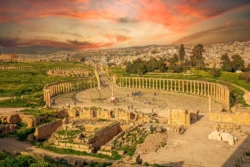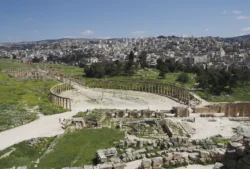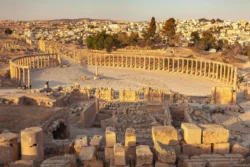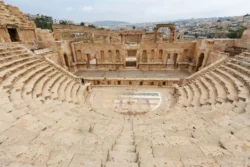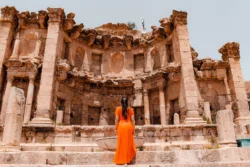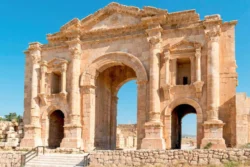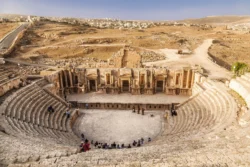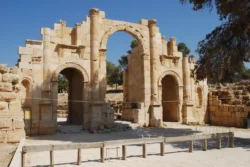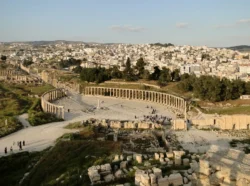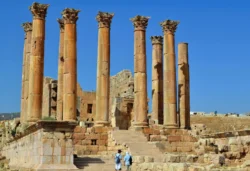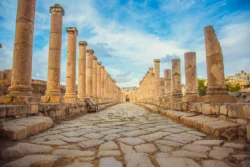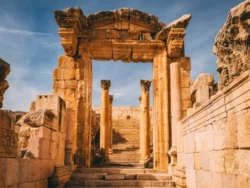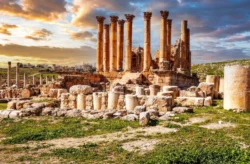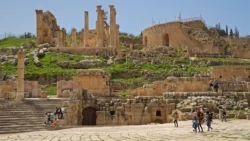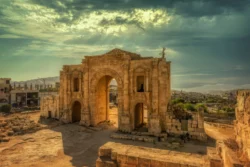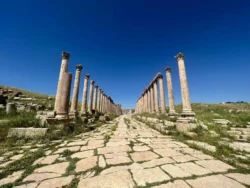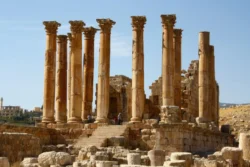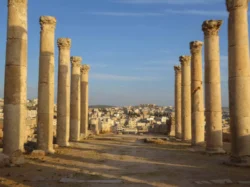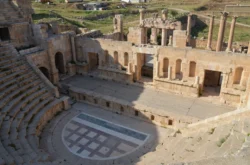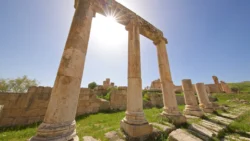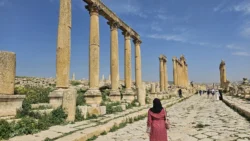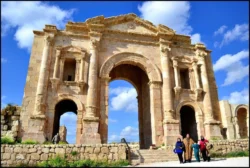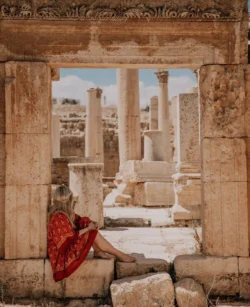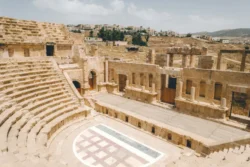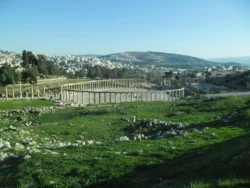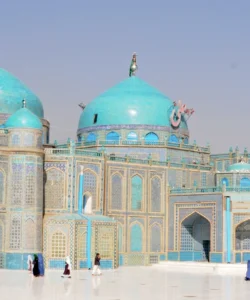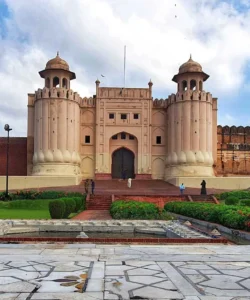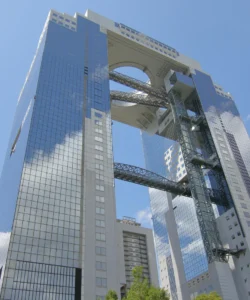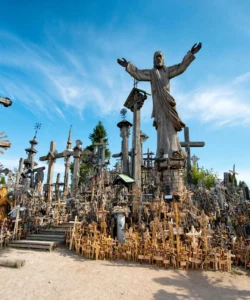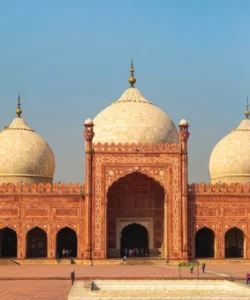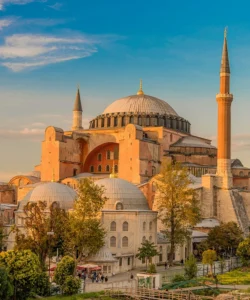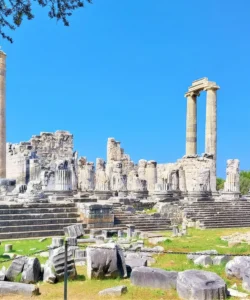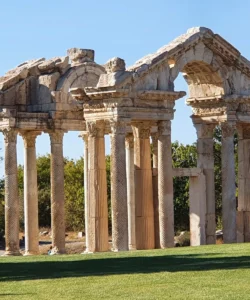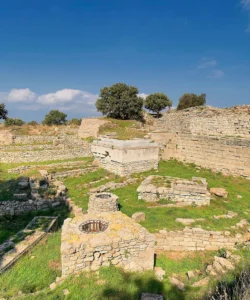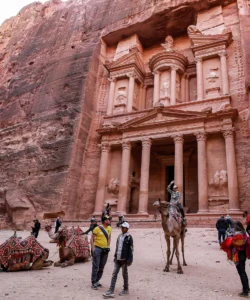Jerash, an ancient city in northern Jordan, is widely considered one of the best-preserved Roman provincial towns in the world. Often called the “Pompeii of the East,” the city’s monumental ruins showcase a grand example of Roman urban planning, with a remarkable fusion of Greco-Roman and ancient Arab-Oriental influences.
Listen to an introduction about Jerash
Name
Jerash (Arabic: جرش), known in antiquity as Gerasa (Γέρασα) or Antioch on the Golden River.
Address
The ancient city is located in northern Jordan, approximately 48 kilometers (30 miles) north of the capital, Amman. The modern city of Jerash is built next to the ancient ruins.
How to Get There
Jerash is a popular day trip from Amman and is easy to reach.
- By Car: The drive from Amman takes about 45 minutes to an hour. Renting a car or hiring a private taxi are the most convenient options.
- By Bus: Public minibuses frequently run from Amman’s North Terminal to Jerash. The journey is affordable, but buses only depart when full.
Landscape and Architecture
Jerash’s architecture is a testament to the wealth and influence of a Roman city at the height of its power.
- Oval Plaza: The city’s entrance is marked by the magnificent Oval Plaza, a wide public square surrounded by a colonnade of Ionic columns. It served as a central meeting place and ceremonial area.
- Hadrian’s Arch: This monumental triumphal arch was built to commemorate the visit of the Roman Emperor Hadrian in 129 CE. Its grand scale and intricate carvings mark the southern gateway to the city.
- Colonnaded Streets: The city’s main thoroughfare, the Cardo Maximus, is an 800-meter-long street still paved with its original stones. It’s lined with hundreds of Corinthian columns and was the city’s commercial and social spine.
- Grand Theaters: Jerash is home to two beautifully preserved Roman theaters, the larger South Theater and the smaller North Theater. The South Theater, with a capacity for over 3,000 spectators, is renowned for its remarkable acoustics and is still used for cultural events today.
- Temples: The city features several soaring hilltop temples dedicated to Roman gods, including the majestic Temple of Artemis, the patron goddess of the city.
What Makes It Famous
Jerash’s fame is primarily due to its incredible state of preservation and its role as a living historical site.
- “Pompeii of the East”: The city was hidden for centuries under layers of sand, which protected its structures from decay. When it was excavated, archaeologists found a city so intact that it earned this famous nickname.
- A Well-Preserved Roman City: It is widely regarded as one of the most complete and best-preserved Roman cities outside of Italy. Its paved streets, theaters, temples, and fountains give a clear picture of what life was like in the Roman Empire.
- Fusion of Cultures: The city’s architecture reflects a unique blend of Greco-Roman styles with the traditional Arab-Oriental elements of the region, showcasing how two powerful cultures coexisted and influenced each other.
- Jerash Festival: Every year, the ancient theaters and plazas come alive during the Jerash Festival for Culture and Arts, which features music, dance, and theatrical performances from around the world.
Differences from Some Other Wonders (e.g., The Roman Theatre in Amman)
While Jerash and the Roman Theatre in Amman are both significant Roman-era sites in Jordan, they differ in scale and context.
- Scale: Jerash is a complete, sprawling ancient city, encompassing an entire urban layout with multiple public squares, temples, theaters, and streets. The Roman Theatre in Amman is a single, large-scale structure within the modern capital.
- Context: Jerash is a dedicated archaeological park where visitors can wander through an entire ancient metropolis. The Roman Theatre in Amman is a magnificent, stand-alone landmark that is a part of the city’s downtown landscape.
Jerash Photos:

